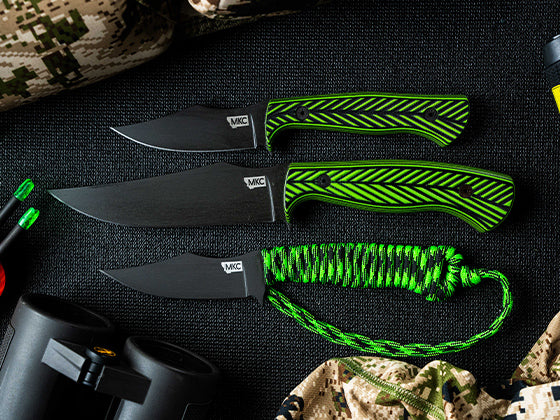Knowing how to apply a SOF tourniquet to your own leg in an emergency can be the difference between life and death.
I don’t say that to be dramatic. The primary purpose of a tourniquet is to stop life-threatening and trauma-induced external bleeding. Being able to act quickly and with confidence when applying a tourniquet is a critical wilderness survival skill.
As hunters and outdoorsmen, we spend lots of time alone or in small groups that can quickly become separated. It’s important to know how to apply a SOF tourniquet to save yourself — or others — in the event of an emergency situation in the field.
Keep scrolling to learn how to use the SOF tactical tourniquet in your hunting first aid kit safely and correctly.

Preparing for Tourniquet Application
Before applying a SOF tourniquet, remove any obstructions from the affected leg, such as your cell phone, keys, or pocket knife, and have both hands free and available. (Keep your cell phone close — you may need it to call for help later.)
Slide the buckle on the tourniquet apart by pushing at an angle. Then, slip the tourniquet underneath the natural arch of your knee. Once the tourniquet is under your knee, you can “seesaw” it upward by sliding the tourniquet back and forth until it’s at least two fingers above the wound — higher is okay if necessary.
Applying the Tourniquet on Your Leg
Once the SOF tourniquet is in place above the wound (again, at least two fingers above), buckle it and take out the slack. From there, pull up on the windlass and twist it until the bleeding stops.
There are two methods for securing the windlass: a C-clamp and a triangle backup. I recommend using both methods to ensure the SOF tourniquet stays in place. If you’re traveling down a mountain or through a dense forest and the windlass hits something hard enough, the C-clamp could loosen, and the bleeding could continue without your knowledge if you don’t secure the triangle backup.
Applying the Tourniquet on Someone Else’s Leg
While it’s crucial to understand how to apply a SOF tourniquet to your leg, it’s just as important to know how to apply one on your hunting partner’s leg.
Like applying a SOF tourniquet on yourself, take it apart, place it under the knee, “seesaw” it to two fingers above the wound, and secure the tourniquet. However, if the injury is less severe — the leg is primarily intact, no bones are sticking out, and the leg is lying at a normal angle — you can slide the entire SOF tourniquet over the casualty’s leg.
If you’re struggling to find the source of the bleeding, ask the person where they feel pain, pulsing, tingling, or numbing.
Slide the tourniquet carefully over the person’s leg to ensure it doesn’t get twisted on the way up. Once it’s at least two fingers above the wound, grab the windlass, remove the slack from the tourniquet, and twist the windlass until the bleeding stops. Then, secure the windlass with the C-clamp and triangle backup, and help the casualty find medical attention.

Checking Tourniquet Effectiveness
You can tell a SOF tourniquet is working properly when the bleeding substantially slows or stops. You can also feel for a pulse without removing the person’s clothing to determine if a SOF tourniquet is effective.
If you can feel a pulse, arterial blood is still making its way past the tourniquet, meaning the tourniquet is ineffective. If you don’t feel a pulse, the SOF tourniquet is restricting blood flow to the injury — the mark of an effective tourniquet.
Keep track of how long the tourniquet has been in place after it’s applied. If possible, write the time the tourniquet was applied on the patient’s forehead so the medical staff can see it when you arrive for help. A SOF tourniquet shouldn’t be in place for longer than two hours, so time is of the essence once the tourniquet is applied.
Tourniquet Application: Final Thoughts
If you’re a hunter or outdoorsman, it’s crucial to understand how to apply a SOF tourniquet to yourself and others. In the event of a gunshot, knife wound, or other emergency situation that causes uncontrollable bleeding, knowing how to apply a SOF tourniquet can save a life.
Before your next hunting trip, practice tourniquet self-application at home to ensure you have the basics down and can apply a tourniquet to your leg (and someone else’s leg) quickly, correctly, and efficiently.
by Josh Smith, Master Bladesmith and Founder of Montana Knife Company
















